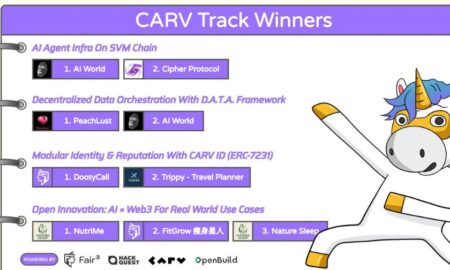Introduction:
In the ever-evolving world of business, maintaining peak performance is a priority for organizations striving to stay competitive. Continuous process monitoring has emerged as a powerful tool to optimize operations, reduce inefficiencies, and deliver exceptional results. By leveraging real-time insights, businesses can make informed decisions that drive growth and enhance productivity.
This approach is not only about tracking metrics but also understanding how processes function and identifying opportunities for improvement. Continuous process monitoring empowers organizations to adapt quickly to changing market dynamics, streamline workflows, and ensure that resources are utilized effectively. In this article, we delve into the strategies and benefits of process monitoring and its critical role in achieving sustained business success.
The Importance of Continuous Process Monitoring:
Understanding the value of process monitoring:
Continuous process monitoring enables businesses to maintain a clear view of their operations. By gathering real-time data on workflows, organizations can pinpoint inefficiencies and uncover hidden opportunities for improvement. This proactive approach ensures that decisions are based on accurate, up-to-date information.
Effective monitoring also fosters transparency within the organization. Teams can access insights into their performance, identify areas for growth, and align their efforts with broader business goals. This alignment helps create a culture of accountability and continuous improvement.
Key benefits for businesses:
- Improved decision-making: Real-time data allows leaders to make informed, timely decisions.
- Enhanced efficiency: Identifying bottlenecks and redundancies leads to optimized workflows.
- Cost savings: Streamlining operations reduces waste and unnecessary expenditures.
- Compliance assurance: Monitoring ensures adherence to industry regulations and standards.
- Competitive advantage: Organizations can stay ahead of the competition by adapting quickly to changes.
How to Implement an Effective Monitoring System:
Choosing the right tools:
The success of a monitoring system depends on selecting tools that align with organizational needs. Platforms that provide real-time analytics, customizable dashboards, and automated reporting can simplify the process and deliver actionable insights. Process mining, for instance, is a valuable technique that helps businesses visualize and analyze their operations comprehensively.
It is essential to choose tools that integrate seamlessly with existing systems. Compatibility minimizes disruption and ensures a smooth transition, enabling teams to adopt new processes without significant hurdles.
Designing an implementation plan:
- Assess current processes: Conduct a thorough evaluation of existing workflows to identify gaps.
- Set clear objectives: Define what the organization aims to achieve through monitoring.
- Involve stakeholders: Engage team members at all levels to ensure alignment and buy-in.
- Test the system: Pilot the chosen tools to identify any challenges before full deployment.
- Train employees: Provide comprehensive training to ensure effective system use.
Key Metrics to Monitor for Performance Improvement:
Identifying critical performance indicators:
Not all metrics are equally valuable. Organizations must focus on Key Performance Indicators (KPIs) that align with their goals. These metrics provide a clear picture of progress and areas that require attention. For example, tracking production times, error rates, and customer satisfaction scores can reveal actionable insights.
Monitoring these KPIs helps businesses identify trends and patterns over time. This knowledge allows for proactive measures to address issues before they escalate into larger problems.
Integrating advanced analytics:
- Predictive analytics: Use historical data to forecast future trends and outcomes.
- Root cause analysis: Identify the underlying reasons for inefficiencies and errors.
- Real-time alerts: Set up automated notifications to address critical issues immediately.
By combining these approaches, businesses can transform data into meaningful insights that drive continuous improvement.
Also Explore: How to Price a Business for Sale | A Comprehensive Guide
Strategies for Enhancing Process Monitoring:
Leveraging technology for better outcomes:
Modern technology has revolutionized process monitoring. Tools like Artificial Intelligence (AI) and Machine Learning (ML) can analyze vast datasets, detect anomalies, and provide recommendations for improvement. These technologies enhance the accuracy and efficiency of monitoring efforts.
Cloud-based platforms are another valuable resource. They allow teams to access data from anywhere, promoting collaboration and ensuring consistency across departments. Such platforms also simplify the integration of monitoring tools with existing systems.
Cultivating a culture of continuous improvement:
- Encourage feedback: Involve employees in the monitoring process and value their input.
- Set regular reviews: Evaluate progress against goals periodically to stay on track.
- Celebrate successes: Acknowledge achievements to motivate teams and reinforce good practices.
By fostering a culture of accountability and improvement, organizations can ensure that process monitoring becomes a fundamental part of their operations.
Common Challenges and How to Overcome Them:
Recognizing potential obstacles:
Despite its benefits, process monitoring comes with challenges. Resistance to change is a common issue, as employees may be hesitant to adopt new systems. Additionally, integrating monitoring tools with legacy systems can be complex and time-consuming.
Another challenge is data overload. Organizations may struggle to extract meaningful insights from the vast amounts of information generated by monitoring systems. This can lead to analysis paralysis and hinder decision-making.
Strategies to address challenges:
- Provide training and support: Equip employees with the skills needed to use new tools effectively.
- Simplify data presentation: Use dashboards and visualizations to make insights more accessible.
- Seek expert guidance: Partner with consultants or specialists to streamline implementation and integration.
- Start small: Pilot monitoring efforts in a specific department before scaling up.
By addressing these challenges proactively, businesses can maximize the benefits of continuous process monitoring.
The Role of Leadership in Driving Monitoring Initiatives:
Empowering leaders to champion process monitoring:
Leadership plays a critical role in the success of process monitoring initiatives. When leaders actively advocate for monitoring practices, they inspire trust and motivate teams to embrace the changes. By demonstrating the value of real-time insights, leaders can align organizational goals with monitoring strategies.
Strong leadership also ensures that resources are allocated efficiently. From investing in the right tools to fostering cross-department collaboration, leaders can guide the organization toward sustained success.
Building accountability and transparency:
- Set clear expectations: Define roles and responsibilities for monitoring tasks.
- Promote open communication: Share monitoring insights with teams to encourage dialogue.
- Lead by example: Showcase commitment to continuous improvement through actions.
With effective leadership, organizations can foster a culture where process monitoring becomes integral to daily operations.
The Impact of Monitoring on Employee Performance:
Enhancing employee engagement through insights:
Continuous process monitoring provides employees with valuable feedback on their performance. Real-time data allows teams to identify strengths and areas for growth, empowering them to take ownership of their development. This transparency fosters a sense of accountability and motivates employees to excel.
Moreover, monitoring eliminates ambiguities in workflows. Employees gain clarity about their roles, which reduces stress and improves efficiency. This clarity translates into higher job satisfaction and improved overall performance.
Providing opportunities for professional growth:
- Customized training programs: Use monitoring data to tailor training initiatives.
- Recognize achievements: Celebrate individual and team accomplishments highlighted by monitoring insights.
- Encourage innovation: Enable employees to contribute ideas for process improvement.
By integrating process monitoring with employee development, organizations can unlock the full potential of their workforce.
The Future of Process Monitoring in Business:
Adopting emerging trends and technologies:
The future of process monitoring lies in the integration of cutting-edge technologies. Artificial Intelligence (AI), Machine Learning (ML), and the Internet of Things (IoT) will play a pivotal role in refining monitoring practices. These technologies enable businesses to analyze data at unprecedented speeds, identify trends, and implement proactive measures.
As remote work continues to rise, cloud-based monitoring platforms will become increasingly important. These platforms ensure that teams can collaborate effectively, regardless of their location, and maintain consistent oversight of operations.
Preparing businesses for a dynamic future:
- Invest in innovation: Stay ahead by adopting the latest monitoring tools and techniques.
- Focus on scalability: Build systems that grow with the organization’s needs.
- Emphasize sustainability: Use monitoring to minimize waste and align with environmental goals.
By embracing these advancements, businesses can ensure that their process monitoring efforts remain relevant and effective in the years to come.
Conclusion:
Continuous process monitoring is an indispensable tool for businesses aiming to enhance performance and stay competitive in a dynamic environment. By implementing robust systems, leveraging advanced technologies, and fostering a culture of continuous improvement, organizations can unlock their full potential.
While challenges may arise, they can be overcome with the right strategies and a commitment to innovation. Ultimately, continuous process monitoring empowers businesses to adapt, grow, and thrive in an ever-changing landscape.



































